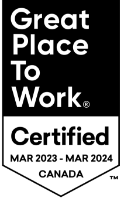
Article
Unbundling the Business Value of a Promise Consistently Kept
David Kincaid, Matthew Loyal Kelly — August 18, 2022
The concept of “brand” is one of the most misunderstood assets on a company’s balance sheet. It’s often used interchangeably with marketing, a misperception that we have both worked on throughout our careers. While they are related, they are very different. In its simplest form, a brand is a promise made to the marketplace by your organization, your people, the products you make, and the customer experiences you design. Essentially, it’s a promise made to your customers, and at Level5, we describe this foundational philosophy as the ‘value of a promise consistently kept™”.
Here, we share why this is a transformative business principle for organizations to embrace.
Traditionally, CEOs and business leaders understood the concept of brand as the marketing or tagline. But a brand is not a logo, campaign, or packaging design. This is all marketing – and marketing is a cost that’s often reduced when budget cuts or circumstances change. At Level5 Strategy, we see the brand as a tangible business asset that creates value that can be leveraged on the balance sheet. It’s a very measurable and powerful tool that’s still mainly being under-utilized and misunderstood.”
The Power of The Brand Promise
Brands all make a distinct and proprietary promise to the marketplace. But a brand’s strength depends on how well it keeps this promise to their users. The most powerful and effective brands can make you believe in their promise because they keep it and communicate it to you 24/7.
From Apple to Starbucks, the strength of these brands is built on the customer’s confidence that their own experience reflects the brand’s promise. This in turn deepens customer loyalty, enables higher premium prices and in turn directly drives and grows the business.
But this approach isn’t just for business. All organizations, from hospitals, to non-profits, and governments, make a promise to their users. Their ability to effectively achieve their mission depends on the ability to articulate their brand promise and then keep it.
The Emotional and Rational Drivers
Twenty years ago, people would have struggled to believe that lining up to buy a coffee for double the average price would become a regular habit for large population segments. Similarly, who would believe that people would camp overnight in front of an electronics store to be one of the first to own a smartphone, mainly when two months later, you could walk into that same store and make that same purchase at the same price, if not cheaper? The drivers here are not rational reasons but emotional ones. Apple has no tagline but is one of the most influential global brands on the strength of its promise consistently kept. Starbucks isn’t just selling coffee; it’s selling indulgence.
These are two examples of how highly effective brands leverage their customers’ rational and emotional drivers.
For most organizations and leaders, the challenge is effectively discerning what those drivers – particularly the emotional ones – actually are. Research shows that there are more than 184 personality types and 96 emotions. It’s overwhelming. And yet, to build your brand and organization, you need to identify one or two that are the right drivers at the right moment. To help address this need, Level5 developed BrandMap™, which enables clients to effectively know their optimal rational and emotional drivers and operationalize this across the team and customer experience.
Brand As a Business System
Placing the brand at the organization’s center is a game changer. It is a hugely profitable and incredibly effective decision to manage the brand as a business system, one that sits at the center of organizations.
In contrast to the traditional approach, which saw the brand as the responsibility of the marketing team, when the brand is a business system, it becomes operationalized across and throughout all the functions and teams. This cohesive approach amplifies the ability to keep the brand promise.
Great organizations engineer the brand promise into their full operations by building their entire business system around its delivery. They makes sure that front-line workers, procedures, and core capabilities of the organization, are all designed and engineered to deliver a great brand or customer experience.



